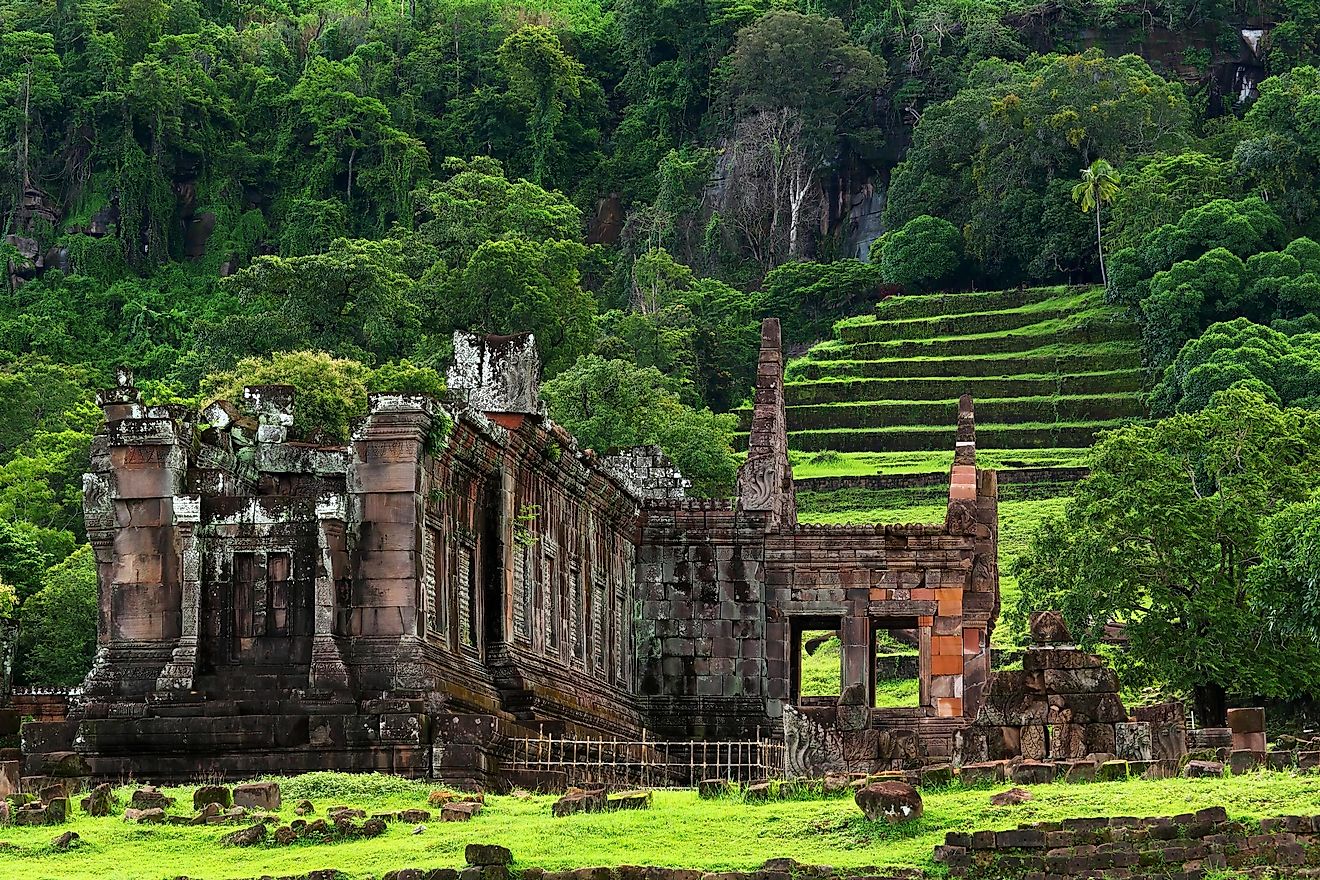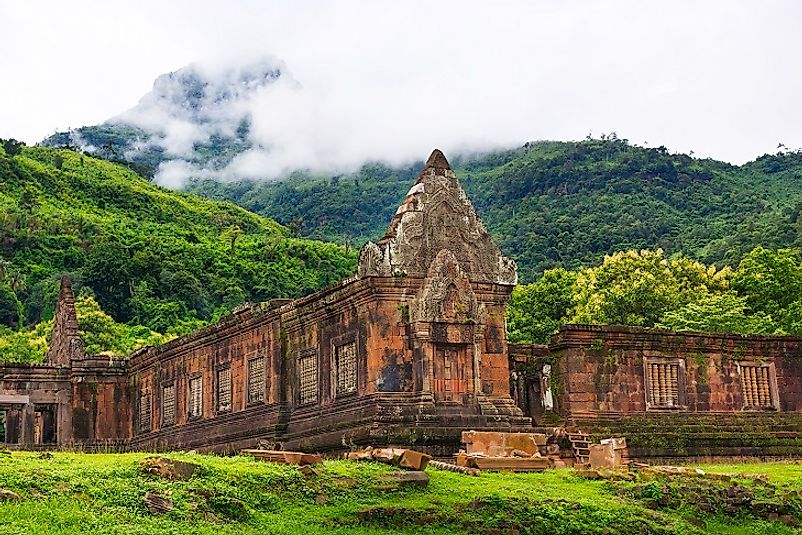Vat Phou Temple And Champasak Culture Sites In Laos

The Vat Phou Temple and other associated Champasak settlements are located in southern Laos at the foot of the Phu Kao Mountain, near the banks of the Mekong River. On this site are the ruins of a 1,000-year old planned urban center. Some historical evidence suggests that a previous temple was built at this site as far back as the 500 AD.
The Vat Phou Temple faces the east. Its entire area, which includes palaces, sanctuaries, libraries, and reservoirs, stretches .87 miles. When coming from the ancient city, which lies 3.7 miles east, the first sites encountered are the reservoirs. On the south side of the axis lies a shrine to Shiva, from here is a road leading to Angkor. The walkway continues to the raised terrace and gardens area with ruins of 6 other shrines.
The site of this temple was first considered sacred because of its proximity to the "lingam"-shaped Phu Kao mountain. The lingam is a cylindrical shape, phallic-like in appearance, that is used to represent the Hindu god Shiva. It is believed that the first temple in Shiva’s honor was built here during the Chenla Empire of the 6th Century. The water from the natural spring was considered sacred and represented the Ganges River. The Vat Phou Temple as it is known today was built during the latter part of the Khmer Empire, taking the place of the original buildings but still utilizing its stones.
When Theravada Buddhism was introduced into this region, the temple was converted. Today a statue of Buddha can be found in the main temple. The Vat Phou Temple and surrounding Champasak cultural landscape were listed as a UNESCO World Heritage Site in 2011.
4. Tourism and Education -
Tourists can visit this site to learn more about the Hindu and Buddhist religious history of this area. Tours usually begin in Champasak town to see the Buddhist temples, French colonial architecture, and local shops. As this town is inhabited today, visitors can also learn about current village life. From here, tourists go to the ancient city where they learn about ancient Southeast Asian life. Just before entering the Vat Phou Temple, there is a museum with archaeological ruins, sculptures, art, and ceramics dating from the 7th Century AD through the 19th Century. After a museum visit, tourists can explore the temple grounds. The stone path leading to the main temple is clearly marked and leads visitors through some of the most important structures here.
3. Archaeological Uniqueness -

The Vat Phou Temple complex provides a unique example of Khmer Empire archaeological style, including its use of carved stone. It is an excellent representation of the importance of the relationship between nature, spiritual beliefs, and humanity. The Khmer culture placed the buildings of the complex in a representation of the universe and the heavens. They believed that replicating the heavens would allow them to live peaceful lives. Some archaeologists believe that this was the first Angkor temple. In addition, some evidence suggests that a stone from the Vat Phou Temple was placed under every later-built temple.
2. Natural Surroundings, Sights, and Sounds -
As previously mentioned, this temple complex is located at the foot of the Phu Kao Mountain. The view surrounding this site is largely influenced by this mountain and its plant life. From its position, the temple complex looks down on the Mekong River Valley.
1. Threats and Conservation Efforts -
Despite its obvious beauty and continued importance to the surrounding communities, the Vat Phou Temple has not been well preserved. As of yet, there has been no attempt at restoring the ancient ruins and only about 5% of the area has been unearthed. The biggest threat to this World Heritage Site is land development nearby. The recent construction of a highway has already disturbed at least 6 other temples in the area. However, the government believes that it will facilitate increased tourism. With the new designation as a UNESCO World Heritage Site, further development will likely be hindered as it now requires thorough assessment and special permits.











